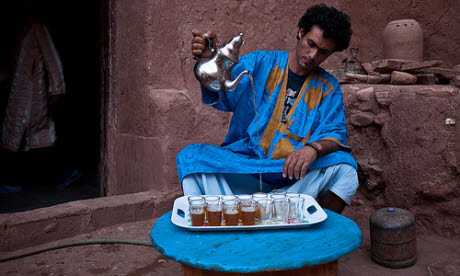
Milk and two sugars or strong and black? Holly Gurr takes a look at how the world's biggest tea drinkers take their cuppas…
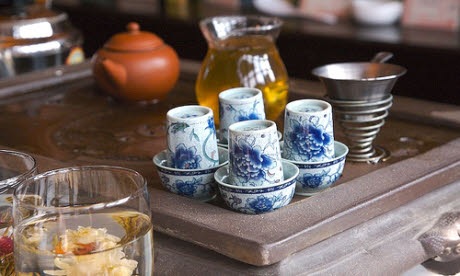 1. China
1. ChinaIt is widely believed that tea began its rise to world domination in ancient China. Legend has it that the drink was first discovered around 2737 BC when the Chinese Emperor Shennong found a tea leaf in his freshly-boiled drinking water that had blown from a nearby bush. Upon drinking this circumstantial concoction, tea, or cha, was invented and thus began its momentous journey to being one of the most-loved beverages in the world.
Today, tea is one of the seven necessities in China (along with other foodstuffs rice, oil and salt) and is consumed by those from all walks of life. Green tea is the most popular and still greatly esteemed for its medicinal properties, helping to reduce the risk of heart disease and some types of cancer. The tradition of making tea is a-whole-nother kettle of, well, tea. Different provinces will take various brewing times, temperatures and quantity of tea. It's best left to the experts.
As a cherished antique of Chinese history, tea is just as much shrouded in ceremony as it is a commonplace beverage. Tea ceremonies are ritually held as part of celebrations or as a gesture of goodwill and there are many customs. If you ever need to apologise to someone in China pouring them tea can make amends.
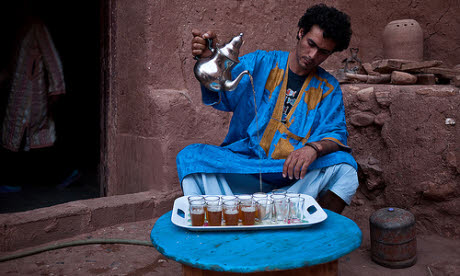 2. Morocco
2. MoroccoAnybody who has travelled to Morocco will know that tea is much more than a simple beverage; it is a national institution and a highly symbolic custom.
Although disputed, it is thought that tea was introduced to Morocco sometime around the mid-19th century. The favoured version of its origin is that it was first introduced when trade between Maghreb and Europe began to flourish, however some historians believe that it came to the country’s shores via maritime piracy in the Mediterranean and Atlantic Oceans.
Though there may be some doubt about its origin, there is certainly none concerning the way it should be served. The tea is primarily a mixture of green tea, mint leaves, plenty of sugar cubes, and a solid dose of dedicated care and respect for tradition. It makes for a tasty and refreshing cuppa.
The tea is ceremoniously poured from a height (of up to half a metre) into dainty glasses, and is a non-negotiable offering to visitors – so be prepared to take tea with strangers.
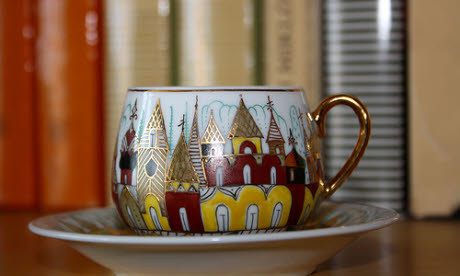 3. Russia
3. RussiaAs one of the coldest countries in the world, it won’t come as a surprise that in Russia tea time is all the time! In this part of the world, tea is never served cold and is almost always black. To sweeten the taste it is common to add sugar, lemon or honey, and from time to time, mashed berries or a fruit preserve.
Though now a drink consumed by all, when tea was first introduced to Russia in the early 18th century, it was jaw-droppingly expensive. This was mainly because it could only be imported via an epic 11,000 mile journey, taking around 16 months on camel-back.
Today, however, the real allure around tea preparation in Russia is the Samovar. A truly ingenious invention, it is a (usually decorated) metal kettle with two compartments. One on top to diffuse the tea, and one underneath in which water is constantly kept hot by an inbuilt heater.
Much like other tea cultures, this beverage is ritually offered to visitors alongside the perfect place to perch. Plus, unlike Russia's other more alcoholic pick-me-ups it won't leave you giddy on your feet or with a banging headache.
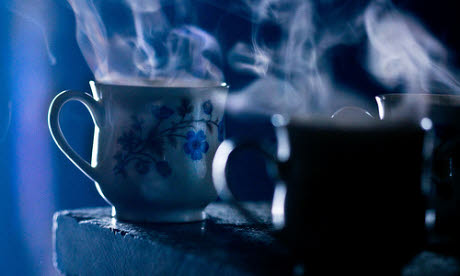 4. India
4. IndiaAs one of the largest tea exporters in the world, India is the place to visit if you are passionate about tea.